Do you have a roofless porch? If you have one, you must already know about some disadvantages that you get because of it.
If the porch does not come with any roof in the design, it will be impossible for you to spend time there comfortably when the weather is unfriendly. The examples are when the wind is too strong, when it is raining or snowing, or when it is too sunny. It also means that the porch loses a function, which is none other but as an alternative spot for hanging out in your home area.
When the porch does not have any roof, it is also quite impossible for you to leave your shoes right there because doing so will cause damages to the footwear. Other than shoes, you can’t even leave other non-weather-resistant items in the same place. If you do so, you will only damage those items because they will be exposed to the sun, rain, snow, etc.
If you add a roof to the porch, you can get an alternative outdoor living space. A place like this is perfect for enjoying the weather and views in the neighborhood from your house. Besides, it will be possible for you to place any items in there without having to worry about some possible damages.
The question then is: can you add a new roof extension to the existing one? Thankfully, the answer is: yes, you can.
In this article, we will share with you the step by step of how to add a porch roof to an existing roof. Before we start, please notice that you must at least have basic carpentry and building skills to do the project on your own. If you do not have it, it would be wiser to hire a pro to create the roof for you.
Another thing that we want you to know is that in this article, we want to focus more on a project that uses posts instead of columns to support the porch roof addition. The reason why we do so is that it will make the construction process easier to do, even by those with beginner to medium carpentry and building abilities.
- Step 1 – Check Your Local Building Codes
- Step 2 – Evaluate The House and The Existing Roof
- Step 3 – Check the Porch Level
- Step 4 – Building the Supporting Posts
- Step 5 – Attaching the Valley Board
- Step 6 – Attaching the Top Plate
- Step 7 – Attaching the Rafters
- Step 8 – Covering the Roof with Plywood and Shingles
Step 1 – Check Your Local Building Codes
The very first step that you must do before starting the project is checking the local building codes. For you who are not familiar with these, we can say that these are a set of regulations that you must follow to be able to build, renovate, or remodel your house.
Commonly, the local building codes from an area are different from the ones applied in another. However, the primary purpose is more or less the same. It is to make sure that the construction meets the local community standards, including also when it comes to health and safety values.
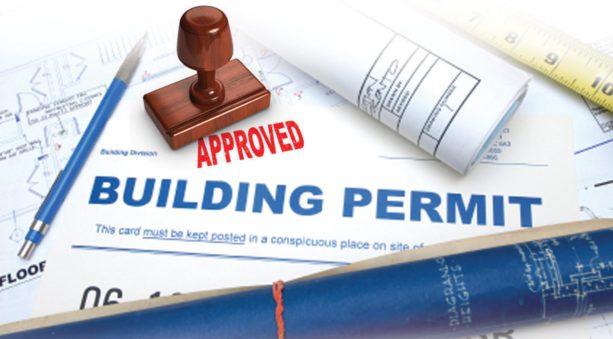
Most local building codes also must you acquire some building permits from the local building codes office first before you start your project. Sometimes, they also need to see your plan too so that they can decide whether or not the new building or renovated home parts meet the community standards. That is why you should provide it from the very start.
Drawing a plan before you start the project is also beneficial for yourself. We can say so because, from it, you will know not only the design of the porch roof addition.
When you want to create the plan, there are two things you must think about seriously. Those are the size of the roof addition and the function of the covered area.
Something like this will be helpful for you in deciding the design of the new roof. Besides, it will also know about the detailed measurements of each material so you can prepare everything needed more thoroughly.
Step 2 – Evaluate The House and The Existing Roof
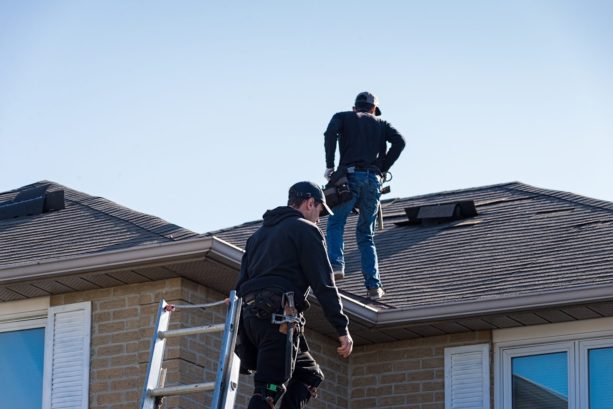
Of course, what we meant here is for you to evaluate only the area where you will attach the new roof addition. For you to know, this step is very crucial, but many people still skip it anyway, and that is not a thing that we want you to do.
The primary purpose of the evaluation is to know whether or not the existing roof can be modified with the new addition. Besides, it is also useful in knowing about whether or not the existing roof is strong enough to hold the extension.
The sure thing that you must focus on this step is whether or not you can build the new roof for the porch without creating any damage right after the project is done or in the future. A new roof is a heavy one. About this, you must make sure that the porch, as well as the house, can cope with the structure.
That is why everything must be stable and strong. It also means that you have to make sure that no parts of the house and the roof are rotting and weak. If by any chance, when doing the evaluation, you find some worrying or even damaged parts, it would be better to fix them first before doing the project.
In this evaluating step, you can also check whether or not some stuff later can make the process of attaching a new roof to the existing one more difficult to do. The items can be phone wires, power cable, or nearby trees and branches.
Step 3 – Check the Porch Level
The next step you must do in this project is checking whether not the surface of the porch is flat or level. This one is another crucial thing that people often miss because they think that it is not necessary.
To be able to build a good and functional roof addition, the porch must be at an even and stable level. If unfortunately, you find that the porch level is uneven, you must fix the problem before starting the project of roof addition. Doing so can prevent you from some possible issues that must you to rebuild everything from the start.
Step 4 – Building the Supporting Posts
Supporting posts are important parts of the new addition structure. These are the ones that will hold up the new roof, which also means that they work as the underpinnings in the design.
As we already told you at the beginning of this article, there are two types of supports that you can use in this project. The first is simple posts, and the second is columns. However, here we will only talk about the supporting posts that are generally easier to install.
If, based on some consideration, your choice goes to ordinary posts instead of columns, the first thing to do is deciding where you want to locate them. Once you choose it, you can mark the ground by busing a stake in each location. The function of doing this is for letting you know the right spots to dig holes for placing the posts.
Once each location is fixed, the next thing to do is digging a hole to place the post. After that, you can put a post in each hole and then set it by using a concrete mix.
To make sure that all of them can stay in place while the concrete is drying, you can create a temporary brace for each of them.
Step 5 – Attaching the Valley Board
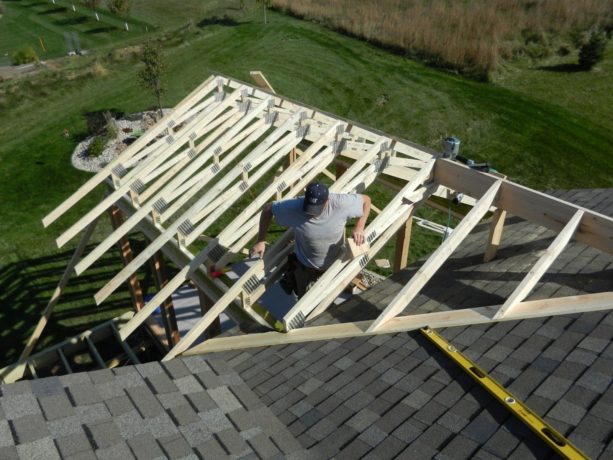
Based on the size of the new addition that you wish to have to cover the porch area, attach a valley board by nailing it down on the existing roof. One thing that you need to understand here is that a different design will require different numbers of the board.
For example, you will need more when the new roof that you choose is in hip style. If you select shed design instead, which is commonly easier to build, you will possibly only need to attach a valley board on the existing roof.
The function of this element is as a solid nailing surface that you will later use to install the rafters of the new porch cover. This part is attached to the old roof of the house.
In this case, another thing that you need to know is that you have two options, which are to strip the shingles of the existing roof or just to leave it. Either of the options is good to choose. However, if you want to save time, you can just leave the old shingles without doing anything to them.
Once you are done attaching the valley board, the next thing you must do is dabbing roofing cement on the nailed part of the board and also along the edges of it. The function of doing it is to prevent possible leaks.
If you are not familiar with an item called roofing cement, you need to know that it is different from the regular concrete mix. In simple words, we can explain this as an adhesive and patching material designed for use on the roof only.
There are some functions that roofing cement has. One of them is for stopping leaks that can damage or reducing the benefit given by valley boards, which is none other but the material we need for adding a new roof extension to the existing one.
Step 6 – Attaching the Top Plate

Once you have the valley board attached correctly on the existing roof, the next thing you must do is attaching the top plate. The primary function of doing this is to connect all the support posts. Besides, it will also secure them to the roof later.
In this step, you must measure the dimensions of the roof additio to the posts that you have built previously. This action will be helpful for you in deciding the sizes of the rafters.
The top plate will connect all the posts. If you only have two supports in the design, it means that the other top plate will be attached to the valley board that you have prepared earlier.
Step 7 – Attaching the Rafters
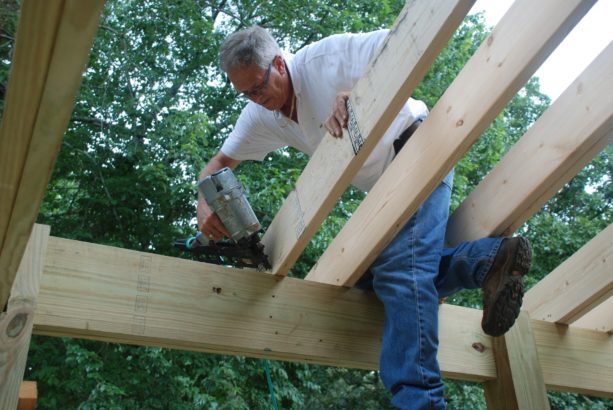
The next step you must follow is attaching the rafters. These are none other but the wooden element that slopes down from the ridge or hip of the roof to the top place. In this case, since the construction that we make is a porch cover, one end of the rafters will be nailed down to the valley board.
The other end will meet the top plate that connects the support post together. In this case, there are two options available. The first is by attaching the rafters to the top plate by using metal brackets. The second is by using the birdsmouth joint technique that is excellent for light-frame construction, such as the building of the porch cover that we talk about in this article.
Step 8 – Covering the Roof with Plywood and Shingles
Now we have arrived at the final step, which is covering the roof. For you to know, there are two sub-steps here.

The first is for covering all the surface of the roof frame with the first layer known as sheathing. Here we recommend you to use plywood with ½-inch thickness.
The reason why we recommend you to choose plywood for the roof sheathing is that it has a better ability to hold moisture for quite a long time. Besides, this material is also quite strong when serving the function as roof covering.

The second sub-step that you must do here is covering the sheathed roof with shingles by nailing these materials down to the plywood sheathing and rafters. In this case, we recommend you to choose something with the same appearance with your existing roof. The reason is none other but a coordinating look.
Closing
The step-by-step tutorial that we share here is just one option. You need to know that there are many ways available to construct a new roof for covering a porch area. Of course, each of them applies different techniques and possibly has a different level of difficulty.
What do you think about the eight steps that we have shared above? Do you think they are complete and simple enough to answer the question about how to add a porch roof to an existing roof? Leave your thoughts in the comment section.





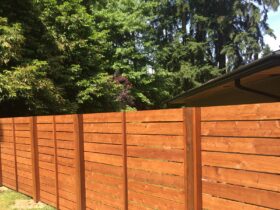

The plan outlined helps me. I have a carpenter coming to see if he will do the job. While I will certainly listen to his suggestions it is helpful to me to have better idea of how to proceed. Originally I planned to do it but decided that 82 yo I might not want use a ladder. This roof will be on a fully raised deck that is about 10 ft above ground.
I am hoping a shed roof will work thereby it will be simpler.
Charles Hill. Email. cullowheedawg@icloud.com